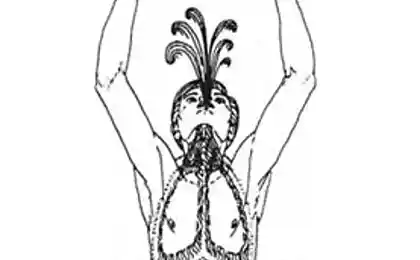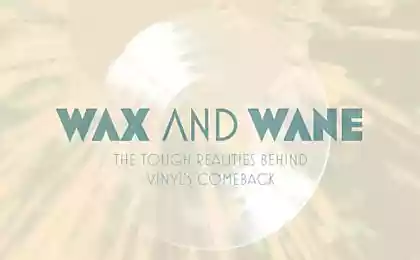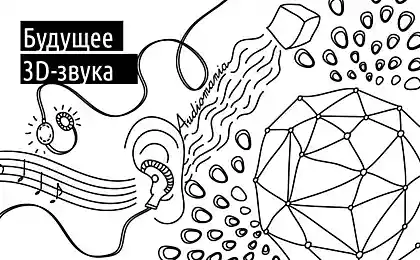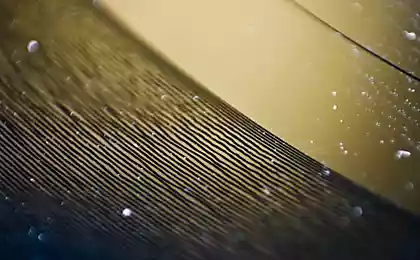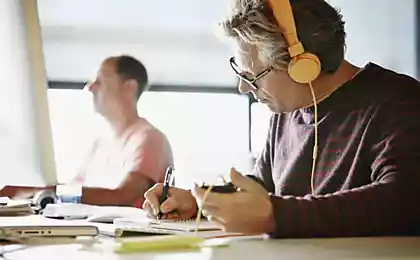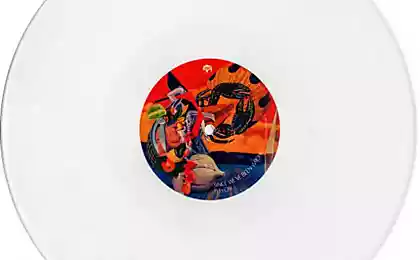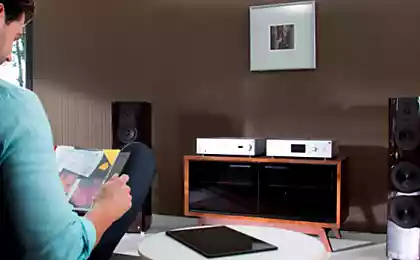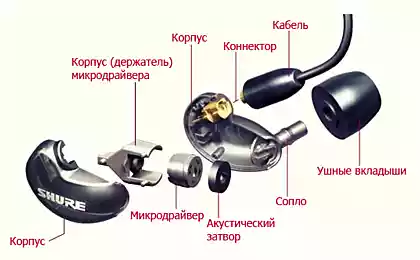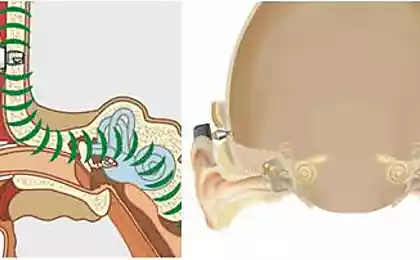Sound reproduction in the image
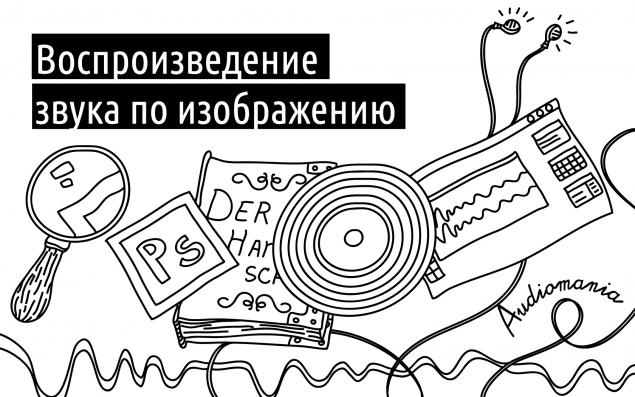
Three years ago, the research team found a staggering amount of multimedia data carriers (as many as 569,148 copies) on the campus of Indiana University in Bloomington. This is more than half a million records, videos and films. The earliest findings described in the отчете research , dated 1893.
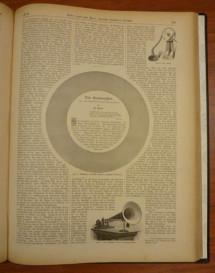
[ Left: Image of the first gramophone disc «Der Handschuh» i>]
However, that report did not indicate which of the objects found in Bloomington can be regarded as the oldest media support. So it did not work because of the neglect of the study, and due to the fact that among the usual objects of study for us - CDs, film reel, cylinders and the like, there were images in books i>. A picture book is not included in the program for the conservation of media information.
But this does not mean that we are not able to play them, and I should note that some records are of great interest.
Just a few months ago, I was wandering on the fourth floor of the library Wells near the elevators and found weighty volume number AP30.U22 v.63 on a large shelf on the far wall. I opened it to page 395, where he found a circular image. A detailed examination revealed that a set of closely spaced microscopic wavy lines.

[ Left: On close examination images «Der Handschuh» noticeable prints soundtracks original records i>]
It's not just a pretty picture - it's recording. As of today, perhaps it is the oldest "record" in the world that you can play!
Let me explain, I do not say that it is oldest recording in the world, just in our time, when people use the word "record" in relation to the audio, then usually they are referring to a specific audio formats, such as varieties of vinyl records that can be played on the player. In fact, the technology for making these records do not date back to Thomas Edison's phonograph, submitted in 1877, and to the gramophone Emile Berliner (Emile Berliner), invented in 1887. In the 20th century gramophone disc recording industry has conquered the world and continues to be popular with DJs 21st century. Characteristic crackling during playback became the hallmark "of old records."
So what can be called the oldest "record"? Since we touched on the subject of gramophones, gramophone what kind of audio is the oldest? The first records available to the general public, appeared in the summer of 1890 in Europe, and many of them can be listened to even today (eg, here ). It is also known that multiple instances of experienced Berliner gramophone, created by him in 1887 and 1888, are preserved in the Smithsonian Institution, and even in a couple of other places, but their attempts were unsuccessful play, so at this point it is not known that they are recorded.
Finally, some of the very old gramophone records, as that is on the fourth floor of the library Wells, survived only in the form of images on paper i>. This is normal. Many of the early cartoons, which are not preserved in the form of videos, were undoubtedly, printed on paper and given registration copyright in the archives of the Library of Congress. After all the necessary procedures for the preservation of the original based on the printouts shoot animated films, which can be demonstrated to the public. I have found that, by analogy with the animation, paper copies of the "lost" records can be digitized, converted into an audio format and listened.
Here's how it works. At first I was using a high-resolution scanner printout translate into a digital format. Then "straighten" the circular image using the transformation from polar to Cartesian coordinates.
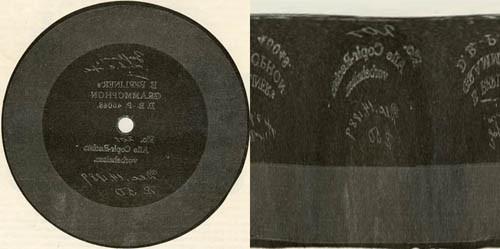
Scan recording in high definition, transformed into a set of parallel lines, with the help of communication polar and Cartesian coordinates i>
Next, I "cut" the individual lines and pin them against each other, creating several long, narrow strips of sound.

Cleaning image signal «Der Handschuh» for translation in audio format i>
Eliminating all the gaps, I use the tool "Fill" to create two separate bands of different widths to fill the white area above and below the middle line. The next step - is to upload the image to the program ImageToSound, which converts them into a format WAV, as if they were the soundtrack to the film on the film. Finally, I combine paired tracks in stereo, WAV, tying the pieces together, I produce summation, and voila - we have sound.
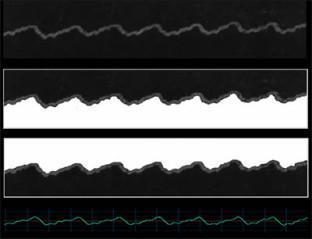
[ Left: Original image of sound (above), a pair of processed images (middle) and the final wave audio file (below) i>]
By the time I got to the fourth floor of the library Wells, I was able to play in a similar way three printed imprint of gramophone records. One of them was quite interesting specimen stored in the Library of Congress - a record in the German language, created by Berliner in Hanover, November 11, 1889. It Berliner says the process of recording visiting guests named Louis Rosenthal (Louis Rosenthal), which explains Berliner, had to pick up a recording with him as an instance for experiments with copying records photomechanical process (which is not further used for inefficiency ). The last couple of years, this record remains the oldest known recorded Berliner gramophone - the direct predecessor of today's players. You can listen to it here .
But what about the instance, recently discovered in the library of Wales? It was published in February 1890 in the German illustrated magazine Über Land und Meer a few months before the beginning of the massive sales of phonographs to curious readers could see the look of the new "record." Title record says that it contains a poem «Der Handschuh» Friedrich Schiller. The author could already recognize that the pattern contains sufficient information to reproduce the recorded speech, at least in theory. He even gave an overview of the method by which readers of that time could listen to the recording.
By drawing from the magazine fabricate an engraving by phototypes, and put it in the middle of a uniformly rotating (at a rate of 50 / min) drive. Now, if you got caught in the teeth of a bamboo stick length of 15 cm and a thickness of ¾ inch, at the end of which is set centimeter sewing needle, and easy to press the tip of the needle on the track, starting from the edge of the plate, you can hear as the inventor of the phonograph reads «Handschuh». The sound will be better if my ears with cotton wool. Blockquote> Recording «Handschuh» was photographically reduced to three-quarters of its original size before publication. Her real diameter engraving technique and speed of rotation of 50 rev / min match the recording made November 11, 1889, as described above. All these points suggest that «Handschuh», was probably another disk Berliner, he gave Rosenthal to experiment with the short-lived photomechanical process of copying records. However, this time on the plate was not a demonstration recording Rosenthal, and the record of the poem, which reads Berliner from beginning to end.
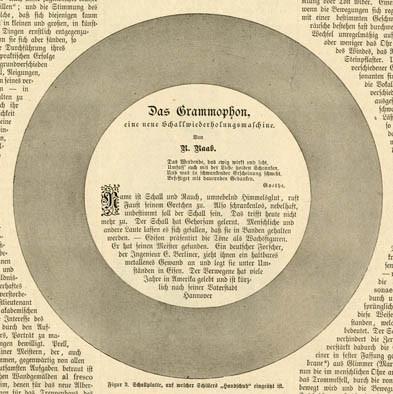
After considering all the evidence, my colleague Stephen Puille (Stephan Puille) and I myself have come to the conclusion that the November 11, 1889 Berliner probably showed the recording process Rosenthal, and then sent him home with a label that they did together, as well as several other recorded Berliner earlier.
If we are right, «Der Handschuh» must be the oldest of the two plates, which makes it the oldest known gramophone record, which you can listen to today - the ancestor of all vintage vinyl.
If we made a mistake, it is still, without a doubt, is the oldest known phonograph record, which contains the whole of literature in German - that she did not take away.
In any case, it is right here, at the University Bloomington. Of course, other institutions also store Über Land und Meer, and in some of them, of course, there is a picture «Der Handschuh», but our copy can play and listen , and it does not need to clamp his teeth with bamboo sticks.
Several other records from Indiana University: h4> Here are a few pieces of audio received from the scan books from the library of Bloomington.
Record Thomas Young's "Lectures natural philosophy and the mechanical arts» h5>

Year: 1806
Lilly Library: Q113 .Y77 (two copies, one owned by Ian Fleming). Thomas Young, "Lectures natural philosophy and the mechanical arts" (London: Joseph Johnson, 1807), Book 1, page XXV, 353.
picture
Significance: The oldest description of the sound wave is written not by automatic means, but the hand-drawn (The book is dated 1807 year, the very same picture is dated 1806).
Listen
Chaz Seas "Fonavtograf» h5>

Year: 1874
ALF (Geoscience): Q1 .A5 ser.3, v.8 , Chaz Seas "Fonavtograf», American Journal of Science and Arts 108 edition (August. 1874) 130-31, on page 131 < br />
Significance: The oldest known publications audio recordings made in the territory of the United States.
Listen
«Speaking Phonograph» h5>

Year: 1877
Library Wells: Q1 .S45 ns, v.37 1877 "Speaking Phonograph», Scientific American 37 edition (December 22 1877), 384-5, on page 384.
Significance: The image is made from cast fragment cut from the sample record foil, which was used by Thomas Addison to demonstrate to the public the work of his phonograph for the very first time. I insert a blank space to indicate the missing part (which is more than half the recording). Fragment can play in any direction.
Listen
E.V. Blake, "The method of recording voice vibrations through photos» h5>

Year: 1878
ALF: Q1. A5 ser.3, v.16 EV Blake, "The method of recording voice vibrations through photos», American Journal of Science and Arts 116 (July 1878), 54-59, on page 57.
Significance: The oldest known publication record with recognizable phrases in English («Brown University»; «How do you do?»), As well as the publication of photographic naistareyshaya known sound recording.
Listen
Source: geektimes.ru/company/audiomania/blog/249090/





